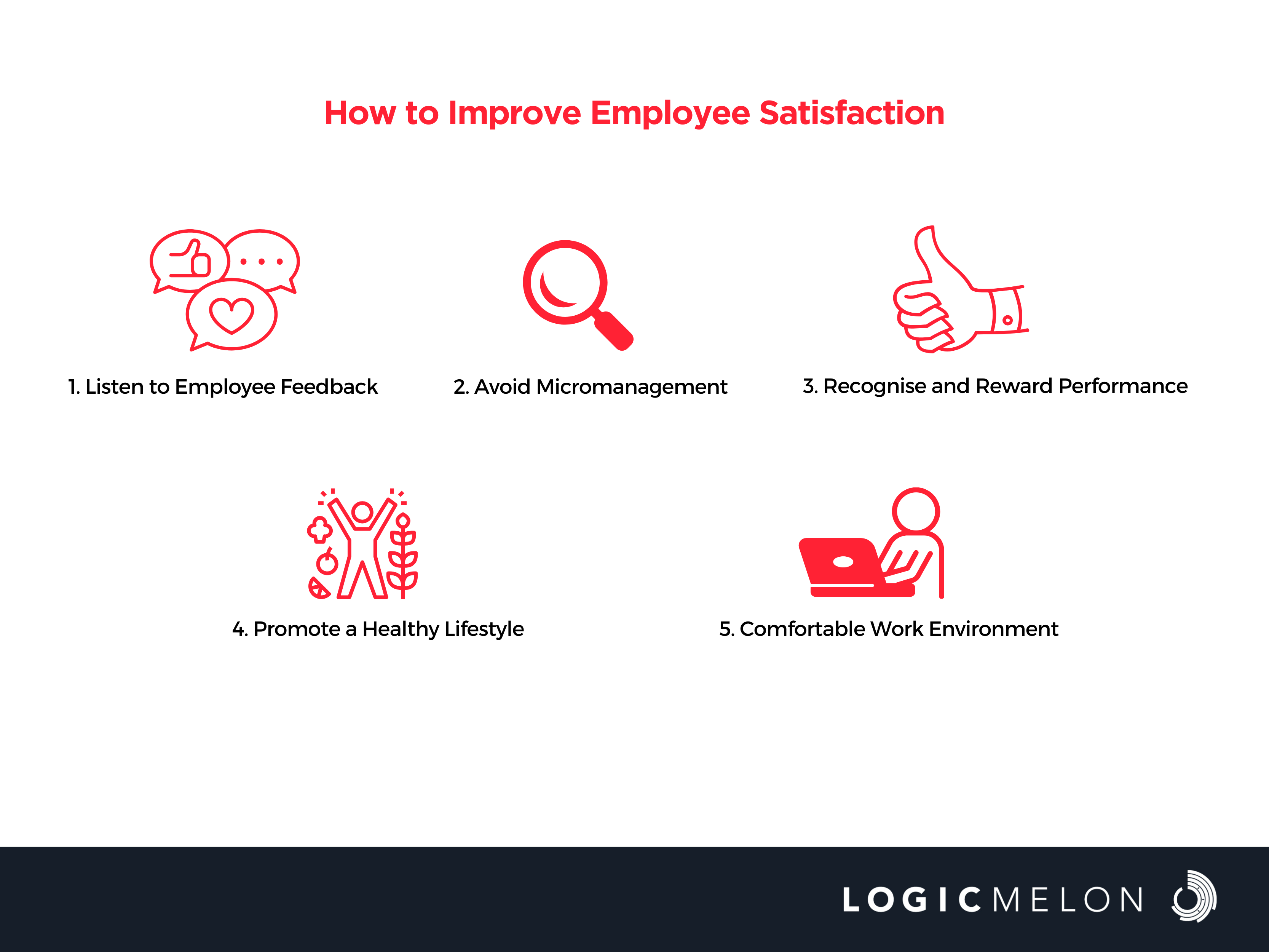Building a Culture of Employee Satisfaction
One Happy Team at a Time Building a team that’s bursting with job satisfaction isn’t just a nice-to-have in today’s workplace; it’s a must-have. Why, you ask? Because a happy team equals increased productivity, motivation, and profitability. In this blog, we’re diving headfirst into the wonderful world of employee satisfaction, exploring what it is, why it matters, and how to skyrocket it in your organisation.
What Exactly Is Employee Satisfaction, Anyway?
Picture this: employee satisfaction is like the mood ring of your workplace. It’s a measure of how content your employees are in their current roles. What makes them tick? Well, it’s a blend of factors, including compensation, workload, flexibility, teamwork, resources, how they perceive management, alignment with your company culture, and opportunities for career growth. Basically, it’s all the things that make them smile when they walk into the office (or log into Zoom these days).
Difference between Employee Satisfaction and Employee Engagement
| Aspect | Employee Satisfaction | Employee Engagement |
| Focus | Current happiness of an employee. | Emotional connection towards organisational mission and values. |
| Indicators | Salary, benefits, working conditions, job security, and relationships with superiors. | Motivation, alignment with organisational goals, and a sense of ownership |
| Outcome | Content employees need not be highly committed or motivated | Highly committed employees, increased productivity, innovation, and responsibility for organisational success. |
| Measurement | Surveys measure satisfaction with the job role | Surveys assess the emotional connection and commitment to work. |
| Impact | May not seek new opportunities and does not go beyond job duties | More likely to go beyond job descriptions, take pride in work, and contribute positively to the work environment. |
| Long-term vs. short-term | Reflects immediate comfort and happiness in current role | Represents lasting commitment to work |
| Scope | Employee satisfaction is part of employee engagement. | A broader range of emotional and behavioural factors. |
So, Why Does Employee Satisfaction Matter?
Hold onto your coffee cups because this is where it gets exciting. Employee satisfaction isn’t just a feel-good metric; it’s a game-changer for your organisation. Why? Because it supercharges employee retention and overall work satisfaction. Happy employees tend to stick around longer, which means less time and money spent on recruitment and training. Plus, they’re more engaged, productive, and likely to sing your company’s praises to anyone who’ll listen. Win-win-win!
Ready to Transform Your Workplace? Here’s How:

1. Listen to Employee Feedback
Say goodbye to one-way communication and hello to a culture of feedback. Regular feedback sessions open the doors to honest conversations between employees, managers, and leadership. It’s like a continuous improvement workshop that keeps ideas flowing and insights glowing.
2. Avoid Micromanagement
Micromanagement is the sneaky productivity killer that nobody likes. It saps morale, slows productivity, and can lead to burnout. Instead, trust your team to do what they do best. Set clear performance expectations and then let them soar.
3. Recognise and Reward Performance
Recognising and rewarding your team’s stellar performances is like giving them a high-five from afar. When employees feel appreciated, they’re more motivated to do great work and share brilliant ideas. Be crystal clear about performance expectations and goals, and then sprinkle in some well-deserved recognition, tailored to individual preferences.
4. Promote a Healthy Lifestyle
Promote a healthy lifestyle at work and watch the magic happen. Wellness programmes and flexible work arrangements signal that you care about your team’s well-being. Workshops, informational sessions, and dedicated time for self-care are all steps in the right direction.
5. Comfortable Work Environment
If your workplace feels like home, your employees will practically move in. Simple changes like ensuring reliable tech and comfortable workstations can make a world of difference. After all, who wants to be frustrated by lagging computers when they could be conquering the world?
Measuring the Happiness Quotient
1. Surveys: Your Ticket to Inside Scoop
Employee satisfaction surveys are your secret weapon. Structured questionnaires let employees spill the beans on what’s working and what’s not. Online surveys, paper-based questionnaires, and one-on-one interviews are all fair game. With multiple-choice questions and rating scales, you’ll have quantitative data that paints a clear picture.
2. Feedback and Engagement: Keep the Conversation Flowing
Feedback mechanisms are like mini town halls where employees share ideas, concerns, and suggestions. Creating a culture of transparency shows that you’re all ears. Regular feedback and engagement opportunities are your secret sauce for building trust and addressing issues pronto.
3. Benchmarking and Analysis: Staying Ahead of the Curve
Benchmarking is your compass in the wilderness of employee satisfaction. It helps you understand where you stand compared to industry standards and competitors. Comparative analysis takes it a step further, helping you gain insights from peers and industry leaders.
Frequently Asked Questions
1. How do you achieve employee satisfaction?
Factors influencing employee satisfaction include compensation, workload, scheduling flexibility, teamwork, available resources, perceptions of management, alignment with company culture, and career opportunities. External factors also influence employee satisfaction. For example, a person who commutes to the office within one hour will be more satisfied than an employee who has to commute for more than two hours, which affects their day-to-day life at work.
2. How do I retain talent by way of employee satisfaction?
Employers need to provide and maintain a healthy work culture to retain talent. It involves improving employee satisfaction, increasing engagement, boosting productivity, reducing costly turnover, and building a work culture that enhances employee satisfaction.
3. Can organisations with high employee satisfaction still face challenges?
Yes, organisations with high satisfaction levels still face challenges related to external factors, industry changes, and evolving employee expectations. A continuous effort is required to maintain and improve satisfaction levels.
Employee Satisfaction: Fostering Engagement, Loyalty, and Success
Maintaining employee satisfaction within an organisation requires ongoing efforts to cultivate a thriving, successful, and competitive workforce. Create a workplace where employees are satisfied and directly contribute to improved performance, customer satisfaction, lower turnover, and a positive work culture. Prioritising the well-being of employees leads to an engaged, loyal, and successful workforce.
LogicMelon
Award-winning recruitment software that will find, attract, hire and analyse the way you want to work. At LogicMelon, we have experienced software recruitment marketing specialists to help you build effective recruitment solutions supported by the best customer service you’ll find anywhere!
Email: sales@logicmelon.com or call LogicMelon (UK) +44 (0) 203 553 3667 (USA) +1 860 269 3089
ChatGPT, AI Chatbots… and Why You Need To Be Worried About Them
The more we learn about what AI chatbots can do, frankly the more worrying it’s become. Read the blog to know more.
Maximising Conversions to Interview – Communication Style and Frequency
Understanding the different communication styles and frequencies can greatly enhance your chances of acing an interview.
What does the Structure of a Good Job Advert look like
Are you on a quest to create a compelling job advert that captures the attention of potential candidates? Then read this article to know more


